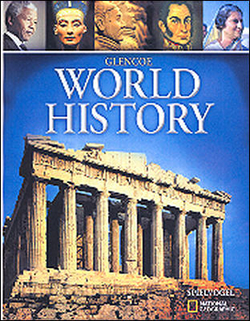Glencoe World History © 2010Chapter 24:
The West Between the WarsStudent Web Activity Lesson PlansFascism Introduction After World War I, European democracy was under threat. France and Britain remained democratic, but a new kind of dictatorship emerged in Italy with Mussolini’s Fascist state. In this activity students will learn more about the characteristics of fascism, and how fascism arose in Italy. Lesson Description
Students will go to a Web site about fascism. Students will read the information and answer four questions about what they have read. Students will then create a poster that displays the methods Mussolini used to create a Fascist dictatorship. Instructional Objectives
- The learner will be able to analyze characteristics of fascism.
- The learner will be able to summarize Mussolini’s methods of creating a Fascist dictatorship.
Student Web Activity Answers - Fascism emerged in Italy in 1919 after the end of World War I. It started when a group of revolutionary nationalists sought to create a new left nationalist league. It was transformed two years later into the new Fascist Party.
- Mussolini was the leader of fascism in Italy. He began as its premier in 1921 and later became dictator in 1925.
- Students' answers may vary. Examples may include use of propaganda tools, war–like imagery, and control over education and youth.
- The Italian education system was strictly controlled under fascism. Schools glorified Mussolini and his fascist regime. School texts were replete with photographs and quotations from "II Duce."
- Students' posters will vary but should include tactics and propaganda tools used by Mussolini.
 | 
















